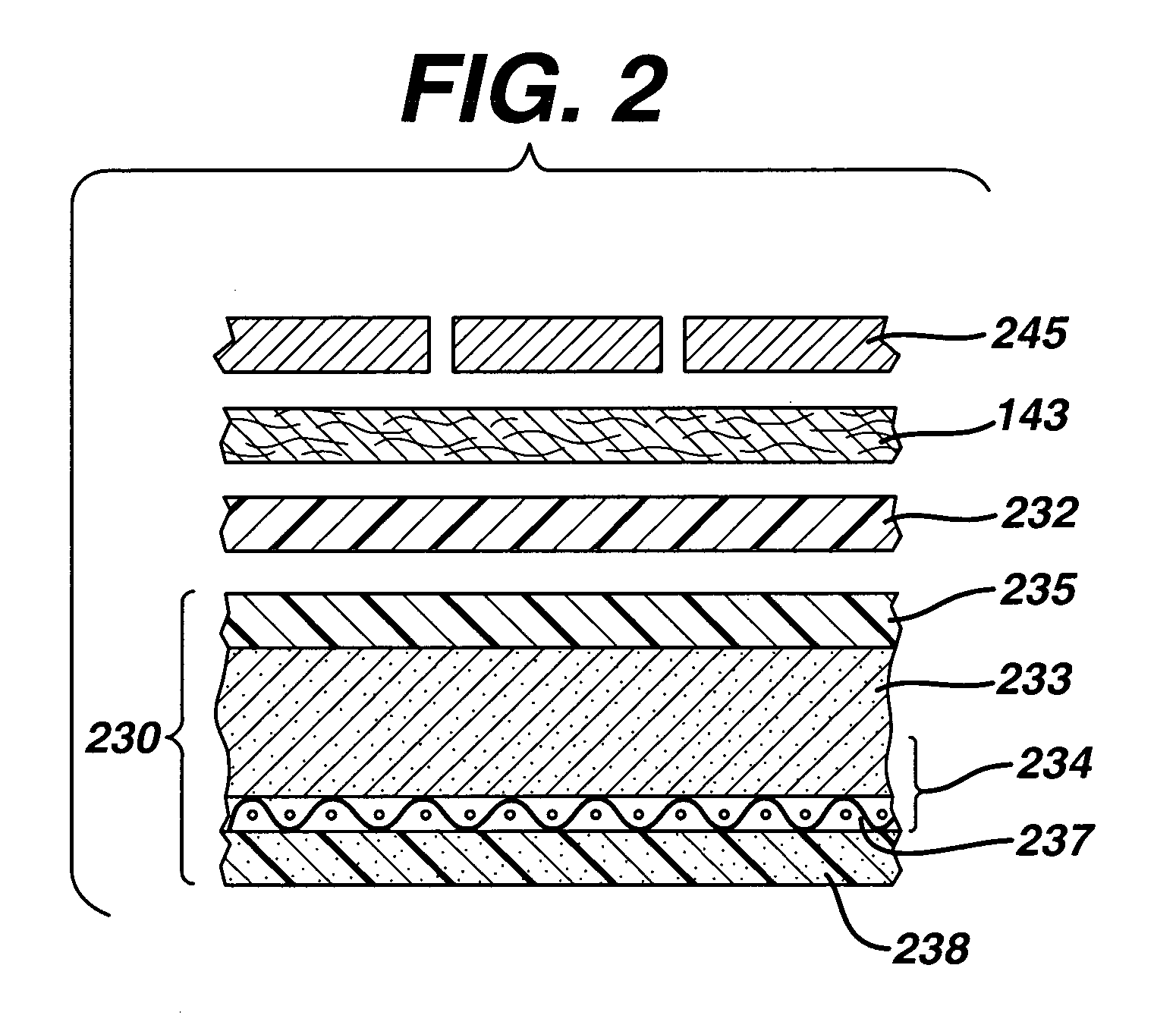Zinc/air cell with improved anode
a technology of anode and zinc anode, which is applied in the field of zinc anode, can solve the problems of increasing the chance of electrolyte leakage, reducing the cell capacity, and damage or destroying the hearing aid or other electronic component being powered
- Summary
- Abstract
- Description
- Claims
- Application Information
AI Technical Summary
Benefits of technology
Problems solved by technology
Method used
Image
Examples
example 1
Comparative Test—Zinc / Air Cell: Conventional Anode Mixture / Conventional MnO2 Cathode
[0057]Test size 675 (11 mm×5 mm) button cells 210 of the general configuration shown in FIG. 1 were prepared. The cathode composition in the same size comparative and test cells, for example, may have the following representative composition between about 3 and 10 percent by weight MnO2, 10 and 20 percent by weight carbon, and remainder binder. A specific cathode composition for the same size 675 comparative and test button cells used for the performance tests reported in Table 1 and Table 2 was as follows: The catalytic cathode composite 234 had the following overall composition: MnO2 4.6 wt. %, carbon black 15.3 wt. %, Teflon binder 18.8 wt. %, with nickel plated steel sheet 238, 61.2 wt. %.
[0058]The anode of the comparative zinc / air test cell210 was prepared in conventional manner by blending a mixture of free zinc particles (amalgamated with 3 wt. % mercury), gelling agent and added aqueous alkal...
example 2
Zinc / Air Cell: Anode from Solid Porous Zinc Mass of the Invention / Conventional MnO2 Cathode
[0063]Test size 675 (11 mm×5 mm) button cells 210 were prepared as in Example 1 except that the anode 815 was formed from the wet zinc mass (wet preform) which was molded into the approximate shape of the anode cavity 255 and then dried to produce the solid porous zinc mass (solid preform) 815C of the invention. The solid porous zinc mass 815C was inserted into the anode cavity 255 and then aqueous potassium hydroxide electrolyte (concentration between about 35 and 40 wt. % KOH and 2 wt. % ZnO) was added. The solid porous zinc mass (solid preform) immediately absorbed the alkaline electrolyte and expanded to form the final fresh wet anode 815 as described in the description hereinabove. The cathode composition comprising MnO2 was the same as used in Example 1. The cell had 0.725 grams of zinc. p The wet zinc mass (wet preform) had the following composition:
[0064]
The wet zinc mass (wet preform)...
example 3
Zinc / Air Cell: Anode from Solid Porous Zinc Mass of the Invention / Conventional MnO2 Cathode
[0072]Test size 675 (11 mm×5 mm) button cells 210 were prepared as in Example 1 except that the anode 815 was formed from the wet zinc mass (wet preform) which was molded into the approximate shape of the anode cavity 255 and then dried to produce the solid porous zinc mass (solid preform) 815C of the invention. The solid porous zinc mass 815C was inserted into the anode cavity 255 and then aqueous potassium hydroxide electrolyte (concentration between about 35 and 40 wt. % KOH and 2 wt. % ZnO) was added. The solid porous zinc mass (solid preform) immediately absorbed the alkaline electrolyte and expanded to form the final wet anode 815 as described in the description hereinabove. The cathode composition comprising MnO2 was the same as used in Example 1. The cell had 0.72 grams of zinc.
[0073]The wet zinc mass (wet preform) had the following composition which involved a lower zinc composition t...
PUM
| Property | Measurement | Unit |
|---|---|---|
| diameter | aaaaa | aaaaa |
| diameter | aaaaa | aaaaa |
| height | aaaaa | aaaaa |
Abstract
Description
Claims
Application Information
 Login to View More
Login to View More - R&D
- Intellectual Property
- Life Sciences
- Materials
- Tech Scout
- Unparalleled Data Quality
- Higher Quality Content
- 60% Fewer Hallucinations
Browse by: Latest US Patents, China's latest patents, Technical Efficacy Thesaurus, Application Domain, Technology Topic, Popular Technical Reports.
© 2025 PatSnap. All rights reserved.Legal|Privacy policy|Modern Slavery Act Transparency Statement|Sitemap|About US| Contact US: help@patsnap.com



